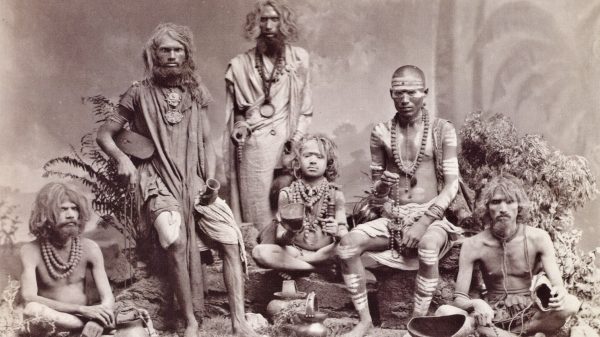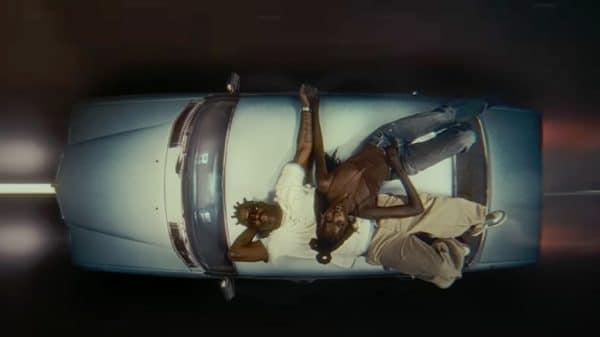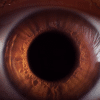In 1965, Beatle John Lennon was given LSD at a dinner party held by his dentist. Paul McCartney was the last to try the drug, and in the making of their album Revolver that year, the foursome credited marijuana as providing much of the inspiration, including the song “Tomorrow Never Knows.” Lennon explored the concept of “ego death” in the lyrics, which is a state of complete transcendence from the self and a step towards enlightenment. The Beatles, of course, opened the door for the original metal bands, Black Sabbath and Led Zeppelin. Of the two, Black Sabbath was more into psychedelics, though Jimmy Page was an actual occultist, while Sabbath only used occult imagery to create a horror movie vibe, though Geezer Butler did wander into exploratory states of consciousness when writing some of the band’s lyrics. Hawkwind would be the next band to delve into drugs and mysticism. They also hailed from England, and were the springboard from which their bass player Ian Kilmister would form the band Motörhead. Anarchist sci-fi writer Michael Moorcock wrote Hawkwind’s lyrics. Moorcock also wrote lyrics for Blue Oyster Cult, and held a mantra that man should not serve god or master, but become their own master. The band’s “Space Ritual” album delved the deepest into “Pyschonaut” concepts.
At their core, modern day pyschonauts owe every thing to Shamanism, which has survived since the Paleolithic era and is inherently ingrained in the human quest to reach beyond and understand that which is hidden. There are dozens of shamanistic paths, ranging from the American Indian to those more steeped in eastern mysticism – even the Viking tribes of northern Europe had medicine men who conducted rituals using entheogens. Hedonism and Shamanism, however, are two different things. A shaman, or even a true enlightened Pyschonaut, would not condone taking drugs in a addictive or non-productive manner, but sees them as a sacrament that deserves respect and should be used in the ritual setting.
Back in North America, the torch was passed from Leary, to Terrance McKenna, who delved more into DMT. The chemical DMT is found in plants used by shamans in the Amazon for years. McKenna first began dabbling with the drug during a trip with his brother to the Colombian Amazon. While it’s psychotropic effect was previously studied by Hungarian chemist Steven Szara , McKenna’s studies had a much more esoteric slant, as he sought to tap into the collective memory of the human species. While it can be smoked, it is also commonly cooked in a etheogenic stew called Ayahuasca. Amazonian shamans claim the plants themselves told them how to cook this stew. One of the most common hallucinations during a DMT trip is the sighting of humanoid figures. McKenna named these figures the “machine elves” or “fractal elves.” (On a side note – in my personal experience with the drug, I found these beings to be much more like aliens than elves.)
McKenna’s best advice for would-be pyschonauts was:
“Experimenters should be very careful. One must build up to the experience. These are bizarre dimensions of extraordinary power and beauty. There is no set rule to avoid being overwhelmed, but move carefully, reflect a great deal, and always try to map experiences back onto the history of the race and the philosophical and religious accomplishments of the species. All the compounds are potentially dangerous, and all compounds, at sufficient doses or repeated over time, involve risks. The library is the first place to go when looking into taking a new compound.”
While this is not an advertisement or recommendation to choose this path, a word of wisdom for those interested in embarking upon this path would be to look into your family history for any latent mental health issues that might be brought to the surface during such an experience. It is also not recommended to embark on such a path if taking prescription medication, if you are on medication or have a family history of mental illness – seeking the advice of a professional therapist who is pagan friendly, if not directly involved in the community, would be recommended. Of all the dimensions one might traverse, one of the most dangerous can be one’s own mind, particularly if it is somewhat fragile to begin with.
While one of the best works on the subject is McKenna’s Food Of the Gods, other recommended reading would be The Doors of Perception by Aldous Huxley, Be Here Now by Ram Dass, and LSD, My Problem Child by Albert Hofmann.













